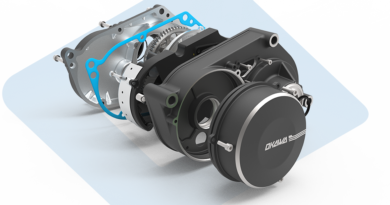Editor’s comment: What themes link successful bike retailers meeting consumer habits head on?
You’ve undoubtedly heard the term experiential retail progressively more in recent times. If you’re lucky your business may have avoided a general trend of flattening or declining sales of hard goods on the shop. Sadly, the majority of retailers CyclingIndustry.News has spoken to since the latter half of 2016 are struggling to shift stock with increasing regularity. There are a multitude of reasons for what is perceived to be a general slowdown in sales, including changing buying habits and altering routes to market, something which we explored with a panel of retailers earlier in March. One thing is certain. Bike shops are more than ever having to make wiser purchasing decisions on stock.
But might the bicycle retailer of the future have the same headaches? It was put to us in an interview with Cadence Performance that “you can either remain fixated on the rear view mirror, or look at the road ahead and steer.” One will result in a crash, was the point made.
Delivered in tandem with our market research (a sample of which you’ll find in the Q2 Trade Journal), we thought it worth spending some considerable time speaking to our audience, understanding the challenges faced, but more importantly hearing how businesses view the road ahead. There are themes that run throughout a number of recent features run on CI.N, none of which you’d necessarily associate with traditional retail.
Three stood out for us:
Membership 
A bike shop, pun intended, is a hub for its customers. But what does that actually mean and how do you ensure that customers aren’t hanging around losing you both time and money? Importantly, is a relationship chargeable and by what margin?
Membership is something that is executed by both Rapha and Cadence. Having created an environment in which customers actively want to spend time, the firms have both devised high value membership packages that keep the customer – whoever they may be – engaged long after they’ve bought their inner tube and broken your shop pump.
Interaction with the product
This theme has again come onto our radar with increasing regularity. London’s Spin cycling show will soon debut a test track in which visitors can ride through darkened areas, illuminated in part by faux car headlights. How else is your customer going to see the benefit of high-vis before you’ve sold it to them?
We’re not suggesting that you ask customers to go and stand in your shop’s showers wearing the latest waterproof jacket, if you have them, that is. Of course, if you can plumb some in, you should. We touch on that more within our piece on Cadence.
Rapha’s Vault again brings us back to product interaction. Mottram’s Spitalfields venue gives visitors the opportunity to get in the saddle to demo clothing, with the wind blowing in the customer’s face. You provide demo bikes, so why wouldn’t a customer want to demo their £200 jacket?
What are we really selling?
This point addresses the end game. Mottram again eloquently  outlined that his firm want to be associated with the peak of that climb you’ve dreamed about since the bug bit. With travel now making up £1 million in turnover for Rapha and growing, the product sale had evolved to become an experience sale.
outlined that his firm want to be associated with the peak of that climb you’ve dreamed about since the bug bit. With travel now making up £1 million in turnover for Rapha and growing, the product sale had evolved to become an experience sale.
The same applies to both Pearson and Cadence. Both have off shoots from product sales that cement their shop’s brand in the mind of the consumer. Be it “stretching classes for cyclists” (Read yoga for men) or counting medical professionals among your staff in order to deliver professional training plans – the end game is the sale item here. When your customer is out on their bike, what will they be talking to their club about? Perhaps it will be internet discounts. Or perhaps they’ll be talking downwind about how employing the services of their bike shop’s V02 Max specialist has pushed them to the head of the peleton.
Related: I’ve visited hundreds of bike shops and one theme links those I return to



